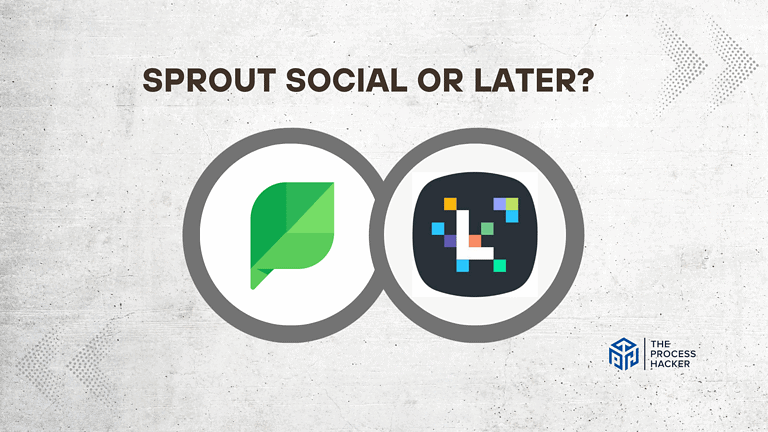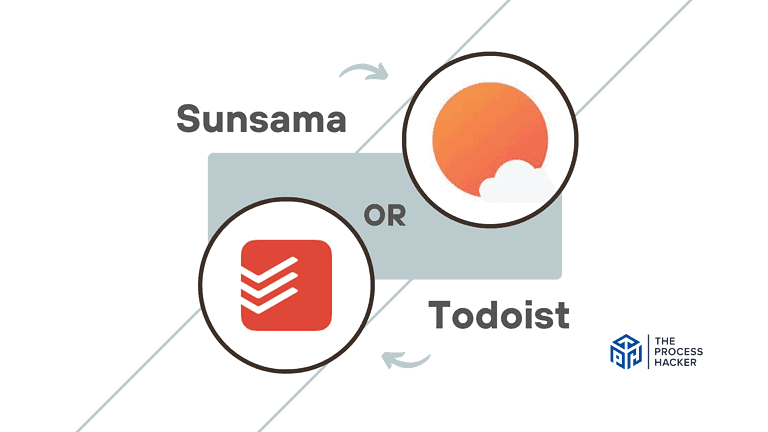How to Onboard Remote Employees: A Comprehensive Guide for Small Businesses
Remote work has become more than a trend—it has become a revolution. Small businesses increasingly embrace this model, recognizing the benefits of a geographically diverse and flexible workforce. But with the shift to remote work comes the challenge of effectively onboarding new employees from afar.
Think about it: How do you build rapport, foster a sense of belonging, and ensure productivity when your team is scattered across time zones? This question keeps many small business owners up at night.
Did you know that companies with solid onboarding processes improve new hire retention by 82% and productivity by over 70%? That’s a game-changer, especially for small businesses where every new team member counts.
This comprehensive guide will walk you through the essential steps of creating a seamless and engaging onboarding experience for your remote employees. From pre-boarding preparations to ongoing support, you’ll learn how to set your new hires up for success and empower them to thrive in their roles in a remote environment.
What is Remote Employee Onboarding?
Remote employee onboarding is the structured process of integrating new hires into a company’s culture, workflows, and expectations in a completely virtual environment. It involves utilizing digital tools and communication channels to provide new employees with the necessary knowledge, resources, and support to perform their roles successfully and become contributing remote team members.
Instead of physical introductions and office tours, you’ll leverage video conferencing, online platforms, and digital documents to familiarize them with their responsibilities, colleagues, and the company.
This process encompasses everything from initial introductions and paperwork to ongoing training and performance management, all facilitated remotely. The goal is to create a seamless and engaging experience that mirrors the effectiveness of traditional in-person onboarding, ensuring remote employees feel connected, valued, and prepared to thrive in their new roles.
Why You Should Master Remote Employee Onboarding
New employees may face different obstacles. Sometimes, it’s not knowing who to turn to for various questions. Other times, it’s poor experience with the training tools or materials. There is also the unavailability of management.
These problems can make employees feel underestimated and disconnected from the new environment. Dissatisfaction with the onboarding process leads to quitting within the first year of employment in 64% of cases.
Recruiting a replacement takes around 24 days and costs around $4000 per employee.
Investing time and resources into planning and conducting a quality onboarding process could prevent this financial and workforce loss and even achieve an 82% increase in new hire retention.
How to Create an Effective Remote Onboarding Process
Bringing a new employee on board is like planting a seed. You need to nurture it, provide the right environment, and give it the tools to grow and flourish.
This is especially true for new remote employees who may not benefit from in-person interactions and guidance. A well-structured onboarding process ensures your new remote hires feel welcomed, prepared, and integrated into your company culture.
Here’s a breakdown of how to create an effective remote onboarding process that sets your new hires up for success:
1. Prepare a Comprehensive Onboarding Plan
A well-structured plan provides clarity, sets expectations, and ensures a smooth transition into their new role. Here’s how you can make the most of it.
Create a detailed timeline for the first week, month, and 90 days
Think of this as a roadmap for your new hire’s journey. It provides structure and clarity, outlining what they can expect and what you expect of them at each stage. Here’s how you can break it down:
- Week 1: Focus on the essentials. This is all about getting settled in.
- Day 1: Welcome them to the team, introduce them to key colleagues (virtually, of course!), and ensure they can access all necessary tools and systems. Walk them through essential company policies and procedures.
- Days 2-5: Start with foundational training on their role, team processes, and primary responsibilities. Schedule regular check-ins to answer questions and provide support.
- Month 1: Build momentum. Now that they have their bearings, it’s time to ramp up.
- Assign initial projects and tasks that allow them to apply their skills and contribute to the team.
- Facilitate introductions to a broader range of colleagues and departments.
- Provide opportunities for them to observe team meetings and workflows.
- 90 Days: Integration and contribution. By this point, your new hire should be feeling comfortable and confident.
- Evaluate their initial performance, provide constructive feedback, and set clear expectations for the future.
- Encourage them to take on more challenging projects and contribute to team goals.
- Formalize their integration into the company culture through virtual team-building activities or social events.
Outline clear goals and expectations for the new hire
Don’t leave your new hire guessing what success looks like. Clearly define your expectations for their performance in the first few weeks and months. This provides direction, motivation, and a sense of purpose.
1) Set SMART goals
Ensure goals are Specific, Measurable, Achievable, Relevant, and Time-bound. For example, instead of saying, “Become familiar with our product,” a SMART goal might be “Complete the product training modules and demonstrate proficiency in key features by the end of week two.”
2) Communicate expectations clearly
Don’t assume anything. Clearly outline expectations for effective communication, availability, work hours, and performance standards.
3) Provide regular feedback
Regular feedback is the cornerstone of effective onboarding in a remote setting. Schedule consistent check-ins, starting with daily or every-other-day meetings during the first week, then gradually transitioning to weekly or bi-weekly as your new hire becomes more comfortable.
Utilize various team communication channels, including video calls, instant messaging, and email, to maintain consistent contact and provide support. During these check-ins, be fully present and attentive, actively listening to your new hire’s progress and concerns.
Offer a balance of positive reinforcement and constructive criticism, highlighting their strengths while gently addressing areas for improvement. Frame feedback as an opportunity for growth and development, emphasizing your investment in their success.
Encourage open two-way communication, creating a safe space for your new hire to ask questions, express concerns, and share their feedback on the onboarding process.
By actively soliciting and responding to their input, you demonstrate that you value their perspective and are committed to providing a positive onboarding experience.
Prepare a checklist of tasks and milestones
This is your new hire’s onboarding companion. It ensures that no critical steps are missed and provides a tangible way for them to track their progress.
- Include all essential tasks: From completing paperwork and setting up accounts to attending training sessions and meeting key colleagues, the checklist should cover everything necessary for a smooth onboarding.
- Make it interactive: Consider using a project management tool or a shared online document where your new hire can check off completed tasks and track their progress.
- Use it as a communication tool: Refer to the checklist during check-in meetings to discuss progress, answer questions, and provide support.
By investing time and effort in these three key elements, you’ll create a comprehensive and effective remote onboarding plan to set your new hires up for success and empower them to thrive in their new roles.
2. Set up Monitoring Software
Sometimes, new remote workers don’t feel entirely comfortable expressing their concerns or issues. Monitoring software for PC can make the onboarding process smoother on several levels:
- Ensures new hires are handling their new tasks and environment well—Monitoring software gives employers insight into the resources new employees are using. With this knowledge, they can ensure employees adapt well and use the suggested materials.
- Enables adaptation of the onboarding process to every new person—With insight into the employee’s work habits and productivity, managers can adjust the onboarding process for every new employee.
- Helps provide additional support and training where necessary—If the new hire spends too much time on one task, they might need help. If they face too many distractions, managers can step in and rearrange the workload or help them reduce distractions.
- Detects signs of burnout or disengagement—Monitoring software can detect the first signs of reduced engagement, motivation, and work-life balance. This allows managers to provide the necessary support, promote healthy work practices, and improve motivation.
- Supports a trustworthy relationship between the employee and employer—With detailed insight into the employee’s actions, the employer can discern whether the employee is reliable in the first several days.
3. Prepare & Deliver the Necessary Equipment & Swag before the Start Date
Does your contract with the new hire state that the company will provide the equipment for work? If yes, ensure you deliver all the necessary equipment before their first day at work. All the required software should be installed in their new equipment to simplify the onboarding process.
Provide them access to all the systems and software accounts they might need for work before or on the first day. You can email them all the necessary links and explanations to help them set up more quickly. Another solution is to schedule a session with the operations officer, who can help them navigate the system.
Consider including a gift with the equipment, like a company pen, notebook, cookies, water bottle, etc. This is a pleasant surprise and reinforces the sense of belonging.
4. Make a Steller First Impression & Set Expectations from Day One
That first day sets the tone for the entire employee experience, so make it count! Start by sending a welcome package with some company swag to their doorstep—a t-shirt, a mug, maybe even a handwritten note from their manager. It’s a tangible way to say, “Welcome to the team!” before they even log in. Then, organize a virtual team welcome event. Whether it’s a casual coffee chat or a fun online game, it’s a chance for them to meet their colleagues and feel that sense of connection.
Finally, provide a detailed schedule for their first day, outlining key activities, introductions, and training sessions. This eliminates uncertainty and allows them to step into their new role confidently and clearly. Remember, a stellar first impression lays the foundation for a positive and productive working relationship.
5. Choose an Onboarding Mentor for Your New Employee
Many of your new employees will benefit from having a buddy who they can always count on. These team members should clearly understand the new hire’s role to help them navigate the new surroundings and rules.
Onboarding buddies should ensure they are available and responsive to the new colleague throughout their first day.
6. Establish Clear Communication Channels
Here’s how to create a communication-rich environment for your remote team:
Regular Check-ins with the Manager
Scheduled one-on-one meetings with their direct manager provide a dedicated space for feedback, guidance, and support. These check-ins should be a consistent part of their onboarding journey, offering a chance to address questions, discuss progress, and build rapport.
Dedicated Communication Channels
Create a dedicated Slack channel or online forum specifically for new hires. This provides a safe space for them to connect with each other, ask questions, share experiences, and build camaraderie. It also allows you to share relevant information and resources with the entire group.
Open Communication Culture
Encourage open and transparent communication from day one. Let your new hires know that no question is too small and their input is valued. Foster an environment where they feel comfortable contacting colleagues, sharing ideas, and seeking clarification.
Variety of Communication Tools
Embrace a variety of communication tools to cater to different needs and preferences. Video conferencing is great for face-to-face interactions, instant messaging allows for quick questions and updates, and email is ideal for more formal communication or sharing documents.
Establishing clear communication channels and fostering an open communication culture’ll create a connected and collaborative remote work environment where your new hires feel supported, informed, and engaged.
7. Immerse New Hires in Company Culture
Onboarding isn’t just about logistics and training; it’s about introducing your new hires to the heart and soul of your company – your culture. Here’s how to make that introduction a warm and engaging one:
Share the Big Picture
Share your company’s values, mission, and vision. What are the guiding principles that drive your work? What are you striving to achieve? Help your new hires understand the “why” behind what you do and how their role contributes to the bigger picture.
Virtual Team-Building
Just because you’re remote doesn’t mean you can’t have fun! Organize virtual team-building activities that encourage interaction and connection. Think online games, virtual coffee breaks, or even a remote team lunch where everyone orders in and chats over video.
Employee Resource Groups
Encourage participation in employee resource groups (ERGs). These groups provide a sense of community and belonging, connecting employees with shared interests or backgrounds. They’re great for new hires to meet people, build relationships, and feel supported.
Showcase Your Culture
Share stories, anecdotes, and examples illustrating your company culture in action. Highlight employee achievements, celebrate milestones, and showcase your team’s unique personality. Consider creating a virtual “culture guide” or video that captures the essence of your company’s values and work environment.
By actively immersing new hires in your company culture, you’re not just giving them a job but inviting them to become part of something bigger. You’re creating a sense of belonging, fostering connection, and setting the stage for a long and fulfilling working relationship.
8. Deliver Engaging Virtual Training
Ditch the boring lectures and embrace interactive online training modules that keep your new hires engaged and excited to learn. Think quizzes, polls, simulations, and branching scenarios that turn training into an active experience.
Use video tutorials and webinars to deliver key information in a more digestible and visually appealing format. Don’t forget the power of gamification! Introduce elements like points, badges, and leaderboards to make learning fun and motivating.
Break down complex topics into bite-sized microlearning modules, making it easier for new hires to fit training into their busy schedules. To truly personalize the experience, consider offering customized learning paths that cater to individual needs and learning styles.
By making virtual training engaging and interactive, you’re not just imparting knowledge but creating a practical and enjoyable learning experience, setting your new hires up for success in their new roles.
9. Gather Feedback and Iterate
Even the best-laid onboarding plans can be improved. Think of your onboarding process as a living document, constantly evolving and adapting to the needs of your new hires. The key is actively gathering feedback and using those insights to improve your process.
Here’s how to turn feedback into fuel for continuous improvement:
- Surveys at Different Stages: Don’t wait until the end of onboarding to ask for feedback. Conduct short surveys at different stages – after the first week, the first month, and perhaps again at the 90-day mark. This lets you capture real-time feedback and promptly address any concerns.
- One-on-One Meetings: Schedule dedicated one-on-one meetings specifically to discuss the onboarding experience. This provides a safe space for your new hires to share their honest feedback, both positive and constructive. Listen to their perspectives, ask clarifying questions, and demonstrate that you value their input.
- Analyze and Identify Trends: Compile your feedback and look for recurring themes or patterns. Are there any common pain points or areas of confusion? Are there specific aspects of the onboarding process that new hires consistently praise? Identifying these trends will help you pinpoint areas for improvement.
- Iterate and Improve: Based on the insights you gather, adjust your onboarding process. This could involve updating training materials, refining communication channels, or introducing new activities to enhance the onboarding experience.
- Share the Impact: Let your new hires know how their feedback is improving the onboarding process. This demonstrates that you value their input and are committed to creating a positive experience for future hires.
By creating a feedback loop and continuously iterating on your onboarding process, you’ll ensure that it remains relevant, practical, and engaging for every new remote employee who joins your team. This commitment to ongoing improvement will pay dividends in the long run.
Key Considerations for Successfully Onboarding Remote Employees
Successfully onboarding remote employees requires a thoughtful approach that addresses a virtual work environment’s unique challenges and opportunities.
Remember to balance real-time interactions like video calls and more flexible asynchronous communication like email and project management tools. This ensures everyone feels connected and allows collaboration across different time zones.
Proactively combat potential feelings of isolation by fostering a sense of community through virtual team-building activities, regular check-ins, and opportunities for social interaction. If your team is spread across multiple time zones, ensure your onboarding process is flexible and inclusive, offering accessible training and resources at any time and scheduling meetings that accommodate different schedules.
Finally, recognize that different roles and departments may have unique onboarding needs. Tailor your process to provide relevant information and training specific to each role, ensuring new hires have the knowledge and resources they need to succeed in their specific positions.
Taking it to the Next Level: How to Create a World-Class Remote Onboarding Experience
Want to truly wow your new hires? Consider incorporating cutting-edge technology like augmented reality (AR) or virtual reality (VR) to create immersive onboarding experiences. Imagine a virtual office tour or interactive training simulations that bring your company culture and work environment to life!
Foster a culture of appreciation by implementing a peer-to-peer recognition program for new hires, helping them feel valued and reinforcing positive contributions from day one. Take personalization to the next level by using assessments and data to create individual learning paths that cater to each new hire’s unique skills, goals, and learning styles. This ensures they receive the most relevant training and development opportunities for their needs.
Alternatives to Traditional Remote Onboarding Program
Who says onboarding has to follow a rigid structure? Instead of squeezing everything into the first few weeks, consider a more gradual onboarding process that extends over several months. This allows new hires to gradually integrate into the company culture and acquire knowledge more efficiently.
For a truly unique approach, try “reverse onboarding,” where your new hires teach existing employees about their areas of expertise or unique perspectives. This empowers them to share their knowledge, fosters collaboration and encourages a culture of continuous learning.
If you are onboarding a group of new hires simultaneously, consider a cohort-based approach. This allows them to go through the onboarding process together, fostering community and peer support from the beginning.
Final Thoughts on How to Onboard Remote Employees
Remote work has become the norm for many businesses. Onboarding remote employees effectively is crucial to ensuring their success and integration into your company culture. By following the tips in this guide, you can create a seamless and engaging onboarding experience that sets your new hires up for success from the start.
Effective remote onboarding is not just about getting new hires up to speed; it’s about creating a welcoming and supportive environment that fosters a sense of belonging and connection. By investing in your remote onboarding process, you’re investing in your company’s and your team’s future.







